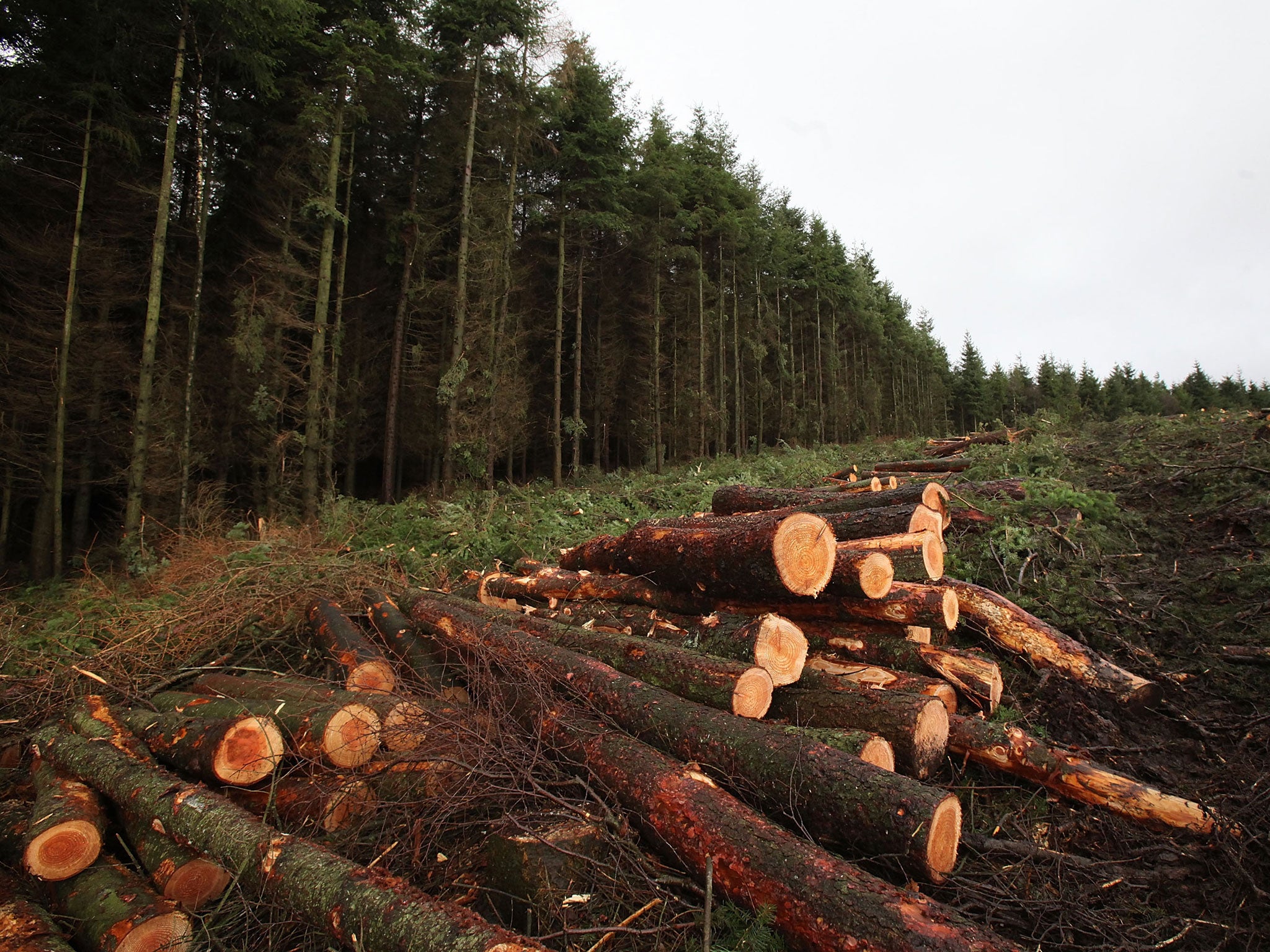Parts of ancient Wentwood Forest cut down because of tree disease
Parts of forest, near Newport, infected by Phytophthora ramorum

A deadly tree disease has led to 500 acres being felled from an ancient forest in South Wales.
The Woodland Trust, which owns most of the 2,500 acre Wentwood Forest, near Newport, confirmed the larches were infected with Phytophthora ramorum - a fungus-like disease which causes extensive damage and death.
This week they are clear-felling 500 acres of diseased trees, before replanting with native broadleaf trees such as oak and cherry at a cost of £35,000.
The forest is one of ancient sites planted with conifers in the 1940s and 1950s to provide fast growing wood for building, leading to dense shading, soil disturbance and acidic soils which damage natural species.
Selective, gradual felling of the conifers, which prevents the forest floor being suddenly exposed to too much light, can allow the native woodland plants to regenerate and stop fast-growing species such as bramble and bracken taking over.
The Woodland Trust's head of woodland management, Andrew Sharkey, said: "This is the most serious and devastating action we've had to take on our estate and it again highlights both the need to tackle tree disease and the importance of restoring as much of our damaged ancient woodland to make it more resilient in decades to come.
"Creating a resilient woodland landscape with different species of trees of different ages is the most effective natural weapon to ensure tree disease does not decimate the countryside."
Subscribe to Independent Premium to bookmark this article
Want to bookmark your favourite articles and stories to read or reference later? Start your Independent Premium subscription today.

Join our commenting forum
Join thought-provoking conversations, follow other Independent readers and see their replies